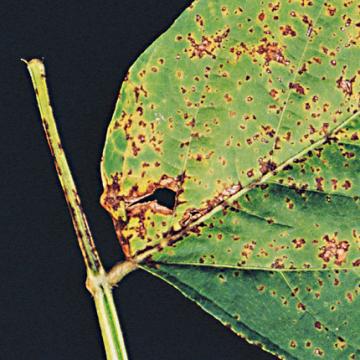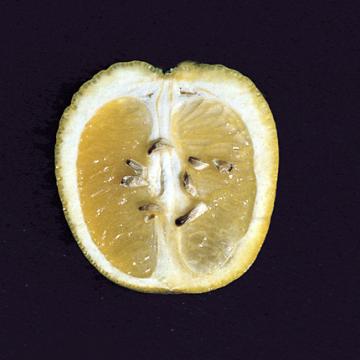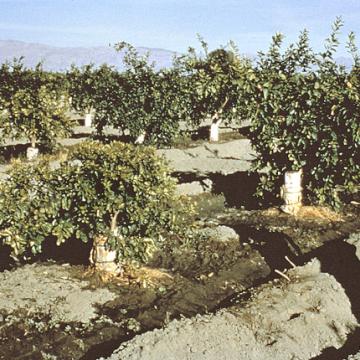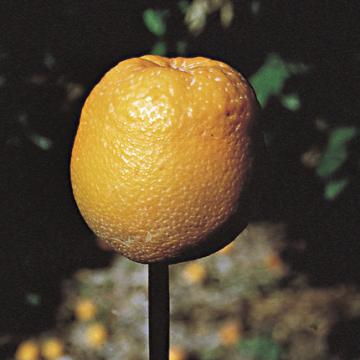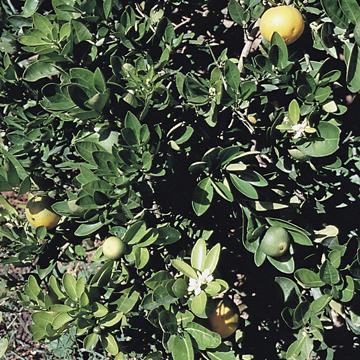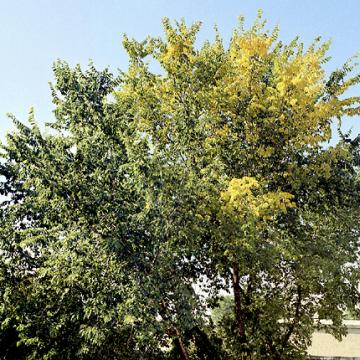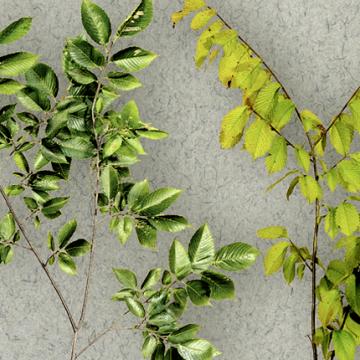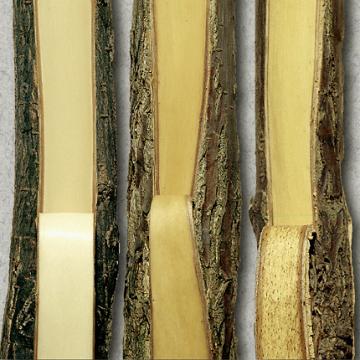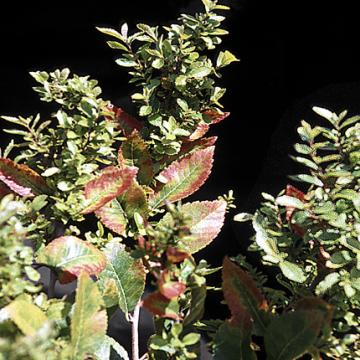DISEASE: Bacterial pustule
HOST: Soybean
Early symptoms are minute, pale green spots on young leaves. Later, small pustules form in the center of spots, best observed on underside of leaves. Spots vary in size and darken with age and lesions coalesce. Dead areas are torn away by wind.
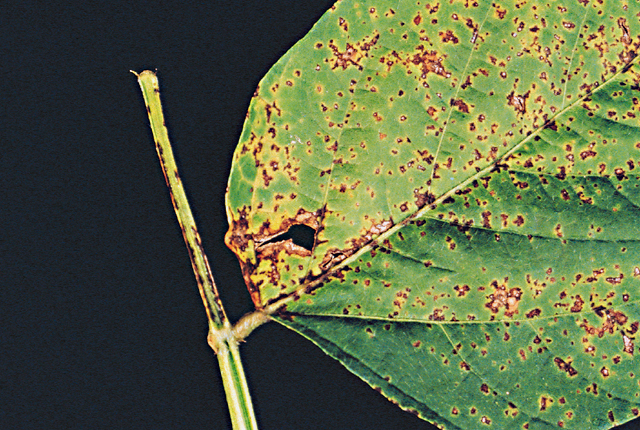
Bacterial pustule | Soybean
DISEASE: Bacterial pustule
HOST: Soybean (Glycine max)
PATHOGEN: Xanthomonas axonopodis pv. glycines
PATHOGEN SYNONYM: Xanthomonas campestris pv. glycines
SOURCE: APS
DISEASE: Citrus stubborn disease
HOST: Citrus (sp. unknown)
Characteristic symptoms of thickened peel at peduncle end and aborted seeds.
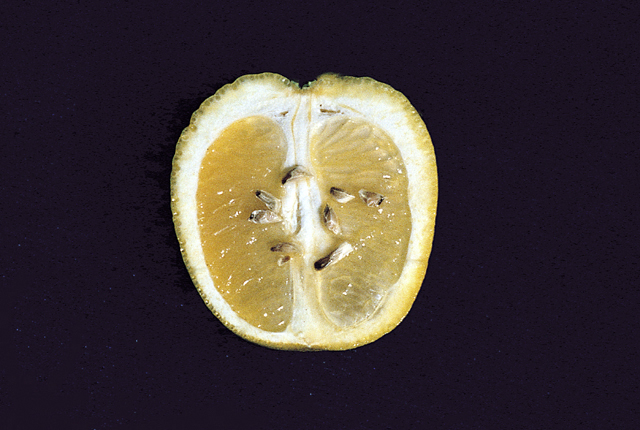
Citrus stubborn disease | Citrus (sp. unknown)
DISEASE: Citrus stubborn disease
HOST: Citrus (sp. unknown) (Citrus sp.)
PATHOGEN: Spiroplasma citri
SOURCE: APS
DISEASE: Citrus stubborn disease
HOST: Citrus (Orange)
Severely stunted sweet orange tree. Foliage is dense and abnormally upright. Leaves may be cupped and unusually thick. They also may be chlorotic and mottled.
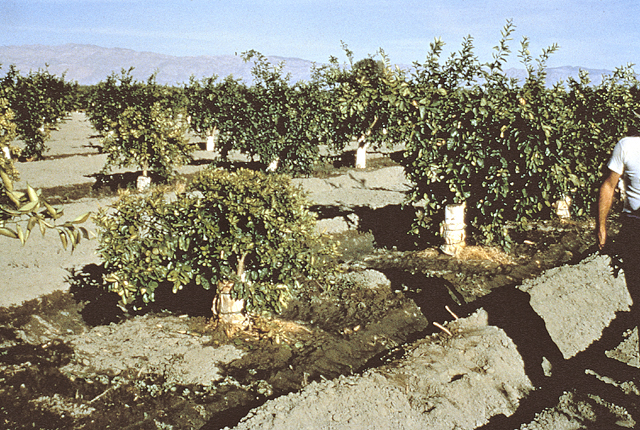
Citrus stubborn disease | Citrus (Orange)
DISEASE: Citrus stubborn disease
HOST: Citrus (Orange) (Citrus sinensis)
PATHOGEN: Spiroplasma citri
SOURCE: S. M. Garnsey
DISEASE: Citrus stubborn disease
HOST: Citrus (Orange)
Fruit from a diseased tree are frequently lopsided or acorn-shaped, usually few and small. They may not color at stem end.
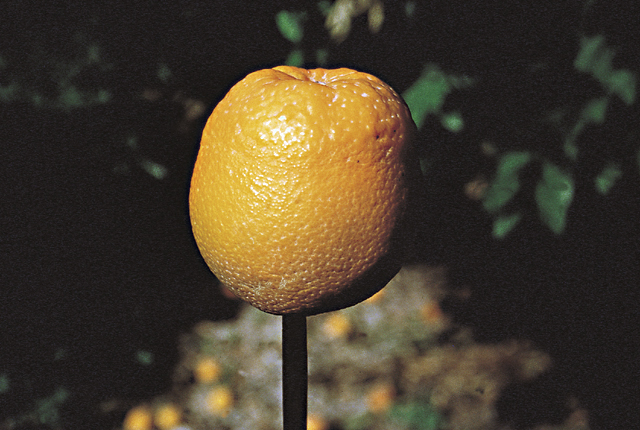
Citrus stubborn disease | Citrus (Orange)
DISEASE: Citrus stubborn disease
HOST: Citrus (Orange) (Citrus sinensis)
PATHOGEN: Spiroplasma citri
SOURCE: J. M. Bove, M. Garnier
DISEASE: Citrus stubborn disease
HOST: Citrus (Orange)
Sweet orange exhibiting off-season flowering and crop heterogeneity. Diseased trees generally have shoots with shortened internodes, which lead to rosettes with cupped leaves.
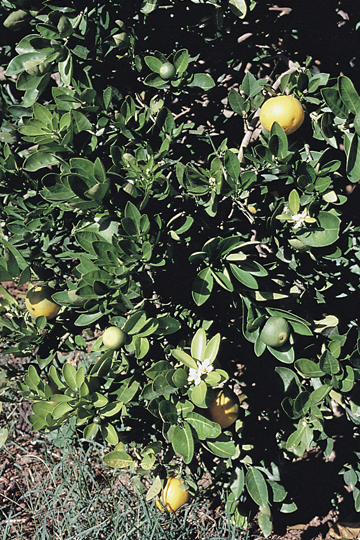
Citrus stubborn disease | Citrus (Orange)
DISEASE: Citrus stubborn disease
HOST: Citrus (Orange) (Citrus sinensis)
PATHOGEN: Spiroplasma citri
SOURCE: J. M. Bove, M. Garnier
DISEASE: Elm yellows
HOST: Elm
Symptoms of elm yellows occasionally appear on one branch before others, but more often they involve the entire crown.
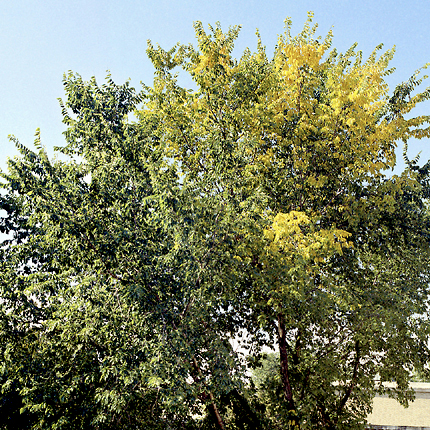
Elm yellows | Elm
DISEASE: Elm yellows
HOST: Elm (Ulmus americana)
PATHOGEN: 'Candidatus Phytoplasma ulmi'
PATHOGEN SYNONYM: Phytoplasma Elm yellows group
SOURCE: W. Sinclair
DISEASE: Elm yellows
HOST: Elm
Diseased twig (right) with epinasty, chlorosis, and yellowing of leaves. Sometimes both yellow and green leaves occur on same branch. Healthy branch (left).
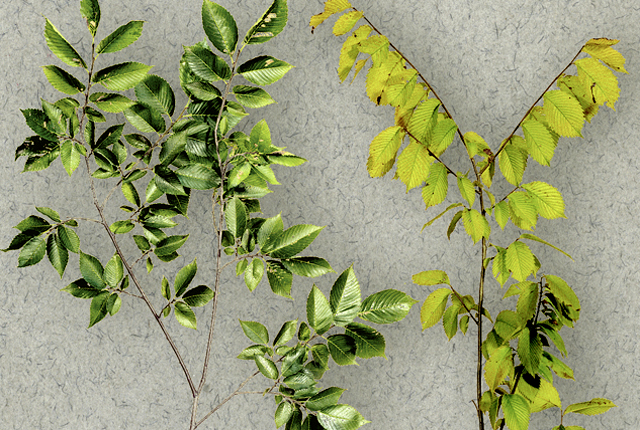
Elm yellows | Elm
DISEASE: Elm yellows
HOST: Elm (Ulmus americana)
PATHOGEN: 'Candidatus Phytoplasma ulmi'
PATHOGEN SYNONYM: Phytoplasma Elm yellows group
SOURCE: W. Sinclair
DISEASE: Elm yellows
HOST: Elm
Branches with butterscotch discoloration (center) and necrotic flecks in phloem and vascular cambium (right). Healthy branch (left). Sudden wilt and browning is common with small trees.
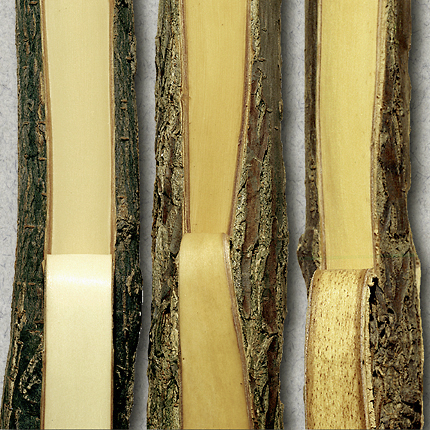
Elm yellows | Elm
DISEASE: Elm yellows
HOST: Elm (Ulmus americana)
PATHOGEN: 'Candidatus Phytoplasma ulmi'
PATHOGEN SYNONYM: Phytoplasma Elm yellows group
SOURCE: W. Sinclair
DISEASE: Elm yellows
HOST: Elm
Elm yellows is characterized by witches'-brooms and stunting. Some cultivars have both yellow and reddish foliar discoloration.
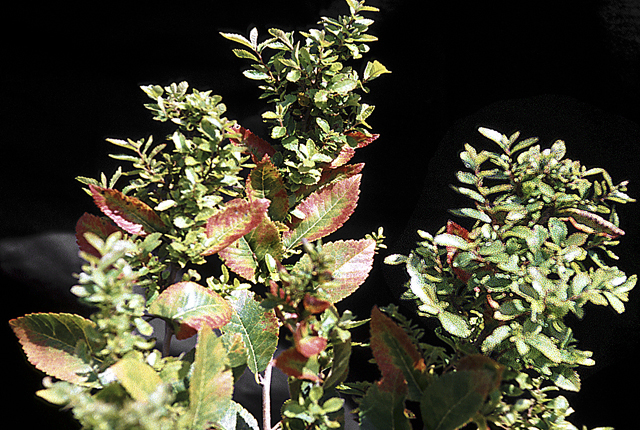
Elm yellows | Elm
DISEASE: Elm yellows
HOST: Elm (Ulmus parvifolia)
PATHOGEN: 'Candidatus Phytoplasma ulmi'
PATHOGEN SYNONYM: Phytoplasma Elm yellows group
SOURCE: W. Sinclair


